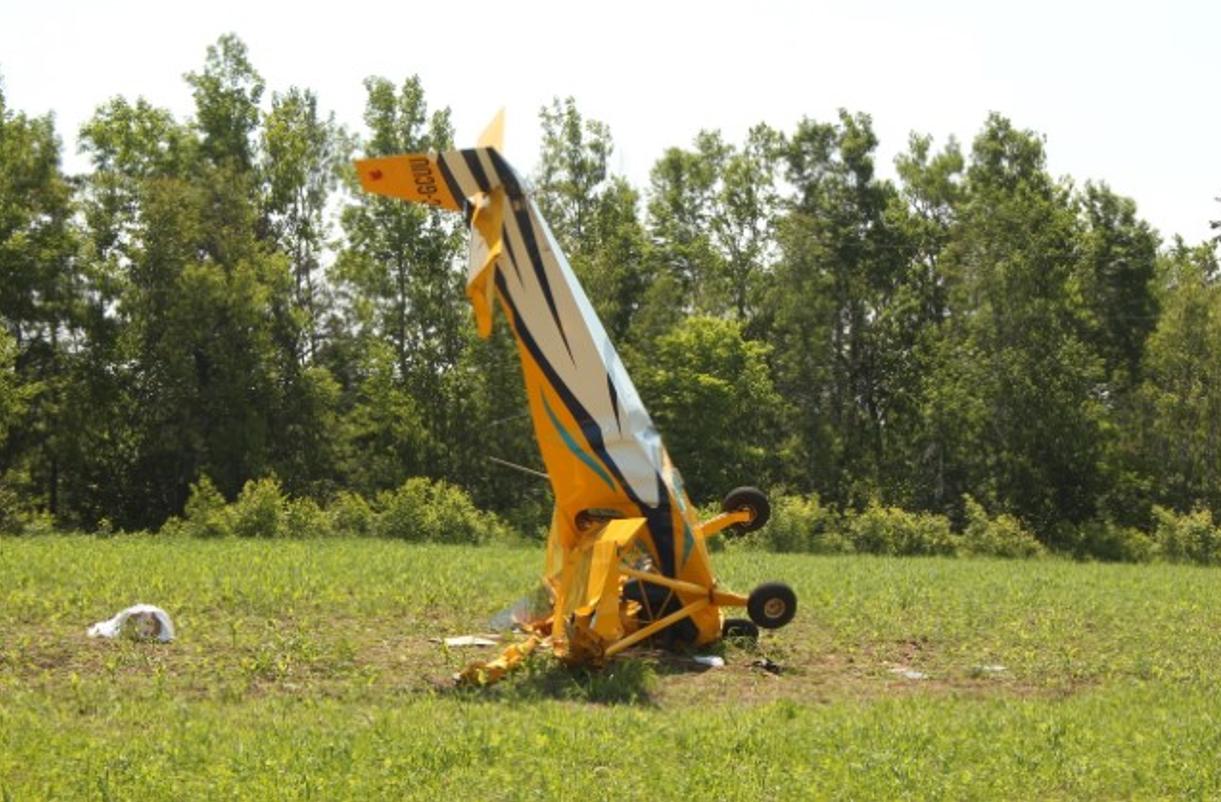Collision with terrain
Amateur-built Zenair STOL CH 750 aircraft
Sussex Airport (CCY3), New Brunswick
The occurrence
On , the Zenair STOL CH750 amateur-built aircraft (registration C-GCUU) departed from Sussex Airport (CCY3), New Brunswick, with only the pilot on board. The pilot did not inform anyone of his plans, so the purpose of the flight and the time of departure are unknown.
A passing motorist saw the aircraft in a field near the airport and notified the airport owner. At around 1820 Atlantic Daylight Time, the airport owner found the aircraft less than 400 feet from the centre of the runway. The aircraft had struck the ground in a near-vertical position and the pilot had been fatally injured.
The pilot had purchased the aircraft in September 2017 and had not flown it since then, other than to perform some taxiing runs.
The pilot had begun flight training at a nearby flight school in August 2017 on a Cessna 172. He held a student pilot permit and a current Category 3 medical certificate, and had accumulated 22.8 hours total flight time. All of these hours were flown with an instructor, and most of these hours were flown in the pilot's first 3 months of training in 2017. In 2019, the pilot had not flown since January, except for 2 hours on the Cessna 172 in June prior to the occurrence flight.
Weather reports from nearby airports indicated that conditions throughout the day were favourable for visual flight, with light winds from the south-southwest.
The TSB deployed to the site and determined that the aircraft engine had been producing power. Investigators confirmed that the flight and power plant controls had continuity before the impact.
The fuel selector was found to be set to “Both”. Fuel was present in the wing tanks, the fuel pump, and the lines to the carburetors. An undetermined amount of fuel had escaped from the fuel system due to impact forces that compromised the fuel lines. The aircraft was equipped with a global positioning system (GPS) and a multi-function display; however, no data from the occurrence flight could be recovered.
The aircraft was equipped with an emergency locator transmitter (ELT). The ELT did not activate, and was found in the off position.
Media materials
Deployment notice
TSB deploys a team following an amateur-built aircraft accident near the Sussex Airport, New Brunswick
Dartmouth, Nova Scotia, 04 July 2019 – The Transportation Safety Board of Canada (TSB) is deploying a team of investigators to the site of an amateur-built aircraft accident that occurred on 03 July 2019 near the Sussex Airport in New Brunswick. The TSB will gather information and assess the occurrence.
Investigation information
Download high-resolution photos from the TSB Flickr page.
Class of investigation
This is a class 5 investigation. Class 5 investigations are limited to collecting data, which are then stored in the modal database. If TSB investigators deployed to the occurrence site, a short description of the occurrence is posted to the TSB website once the investigation has been completed. These investigations are generally completed within 90 days. For more information, see the Policy on Occurrence Classification.
TSB investigation process
There are 3 phases to a TSB investigation
- Field phase: a team of investigators examines the occurrence site and wreckage, interviews witnesses and collects pertinent information.
- Examination and analysis phase: the TSB reviews pertinent records, tests components of the wreckage in the lab, determines the sequence of events and identifies safety deficiencies. When safety deficiencies are suspected or confirmed, the TSB advises the appropriate authority without waiting until publication of the final report.
- Report phase: a confidential draft report is approved by the Board and sent to persons and corporations who are directly concerned by the report. They then have the opportunity to dispute or correct information they believe to be incorrect. The Board considers all representations before approving the final report, which is subsequently released to the public.
For more information, see our Investigation process page.
The TSB is an independent agency that investigates air, marine, pipeline, and rail transportation occurrences. Its sole aim is the advancement of transportation safety. It is not the function of the Board to assign fault or determine civil or criminal liability.
